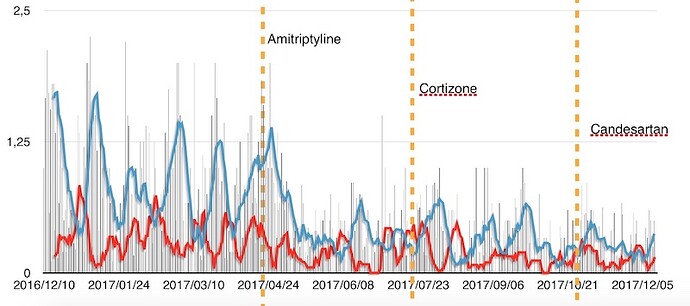Hello,
my name is Florian and I’m 36 and I’m living in France.
I use to read this forum every day which I find very helpful thanks to people who take time to contribute.
My story is very similar to most of stories I have read on this forum:
On september 2015 I felt suddenly dizzy. I have visited my doctor who sent me to the urgency. I had scans, MRI, lumbar puncture etc. Everything was clear but I felt dizzy all the time with a very stiff neck, blurred vision, imbalance, and a lot of headaches.
On december 2015 I visited a neuro-otologist who did caloric test and VNG. He said it was a vestibular decompensation. So he gave me betaserc (betahistine) for 7 months and sent me to ocular therapy. Both medication and therapy did not help me. So he gave me medication for menière disease during 1 month without success. Then he sent me to vestibular therapy during 8 months. The therapy helped me for the blurred vision but not for the dizziness, the stiff neck and the headaches.
On April 2017, my oto-neuro sent me to the neuro who said this is a migraine condition because most of the time when I feel dizzy I have no headache and when I have headache I don’t feel dizzy. The dizziness is the migraine aura. I was to convinced because my symptoms were here all the time. She gave me Amitriptyline up to 25mg. With Amitriptyline, the intensity of the dizziness decreased but it is still here. That’s why she gave me candersartan in addition to the amitriptyline. I started this new med one month ago, for the moment I can not see the difference.
So I think my story is a standard story about MAV. But there is one thing I cannot see in other MAV stories:
On december 2016 I started to record my daily symptoms in a diary. I record the intensity of the dizziness and of the headaches. When I draw a graph with this data, I can clearly see a cycle of 21-24 days approximatively. The following picture shows this cycle with the graph of the dizziness (in blue) and the graph of the headaches from December 2016 to today. Just for info, I’m a male, so this not the cycle of my period.
I think this is really strange but my neuro doesn’t care about it. Do you have the same kind of cycle ?
I tried the migraine diet without success but when I see this cycle, I don’t think food can be a trigger for me, the trigger is the calendar…
What do you think about it ? Thanks ![]()
